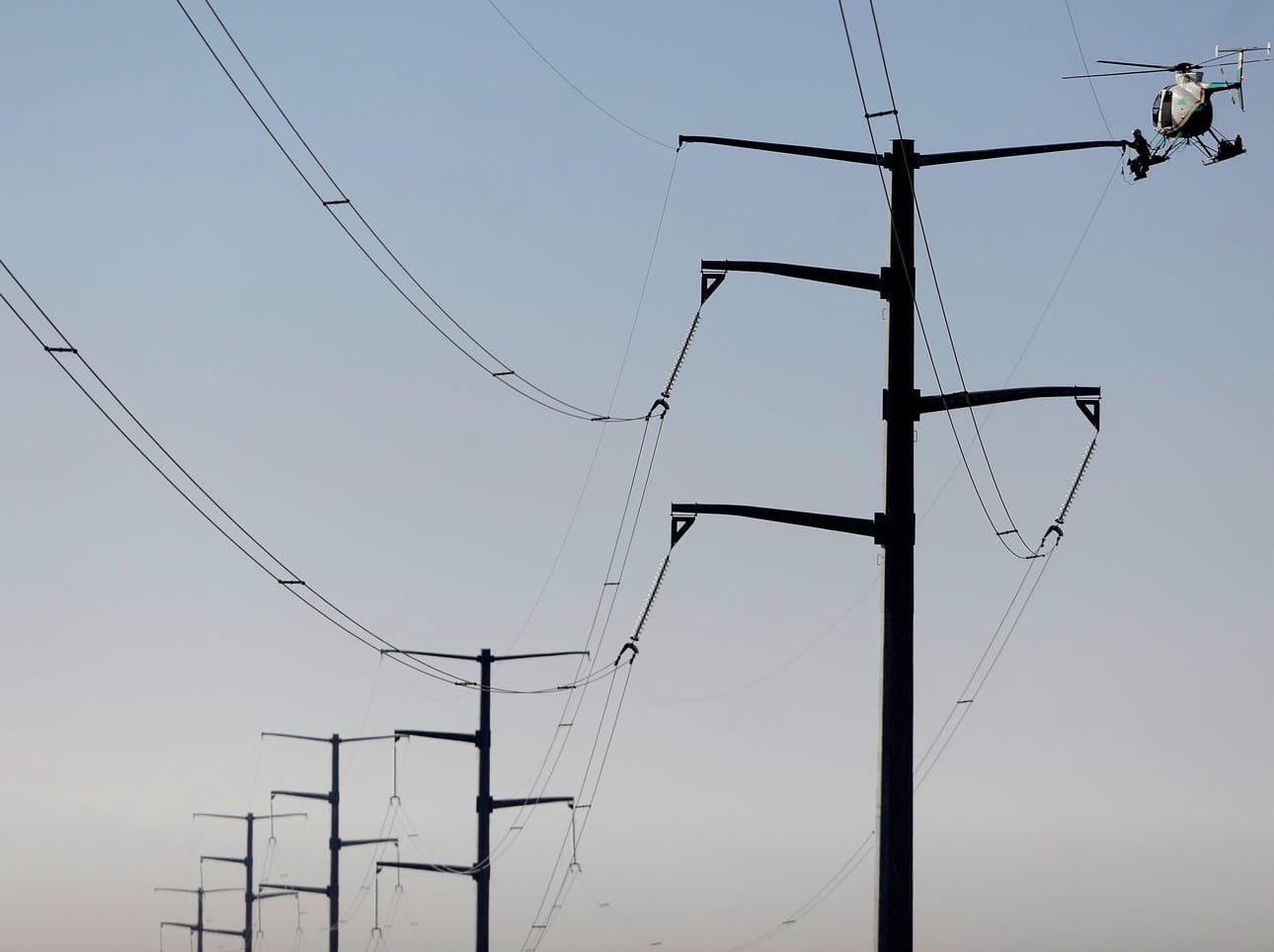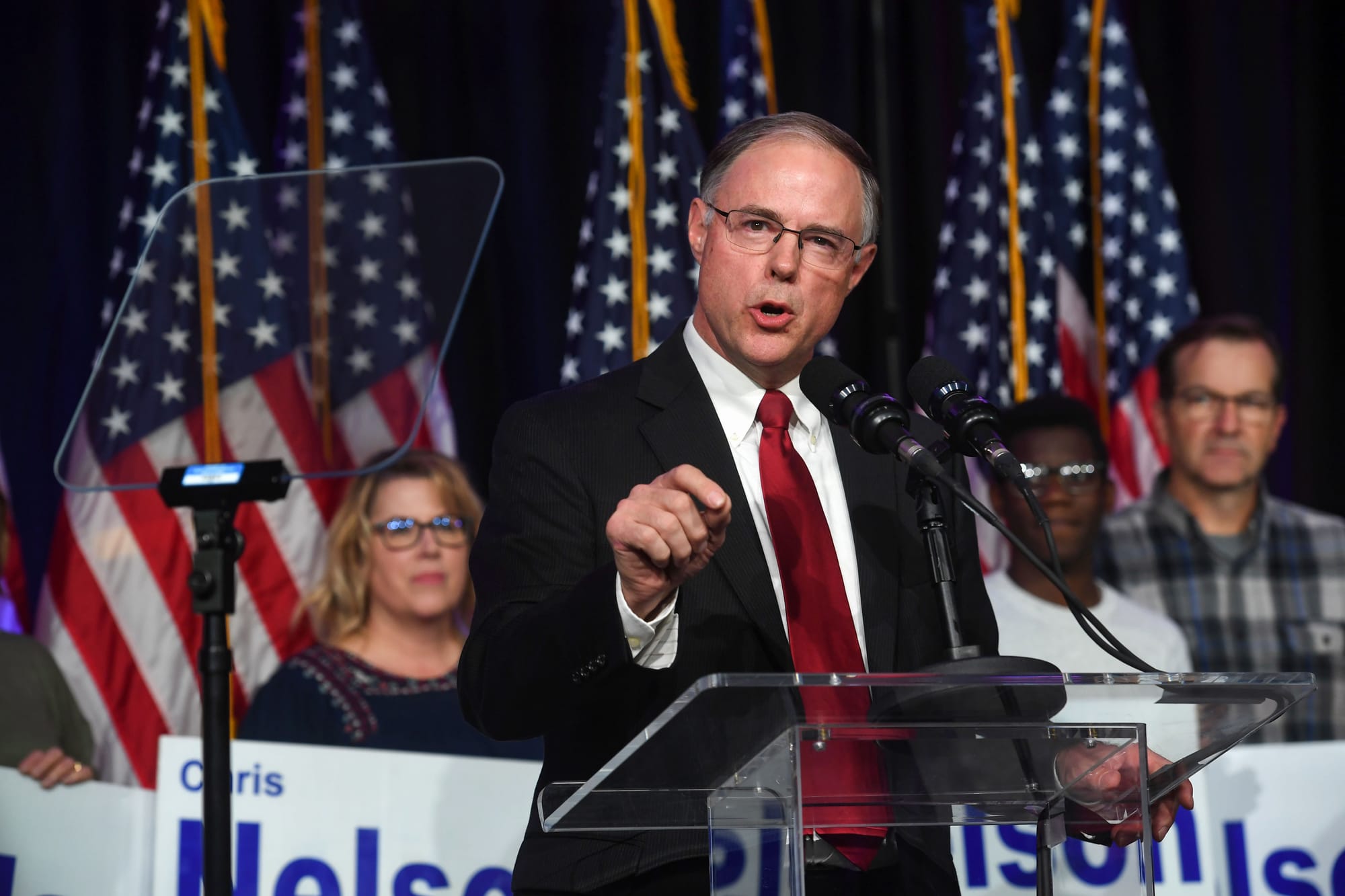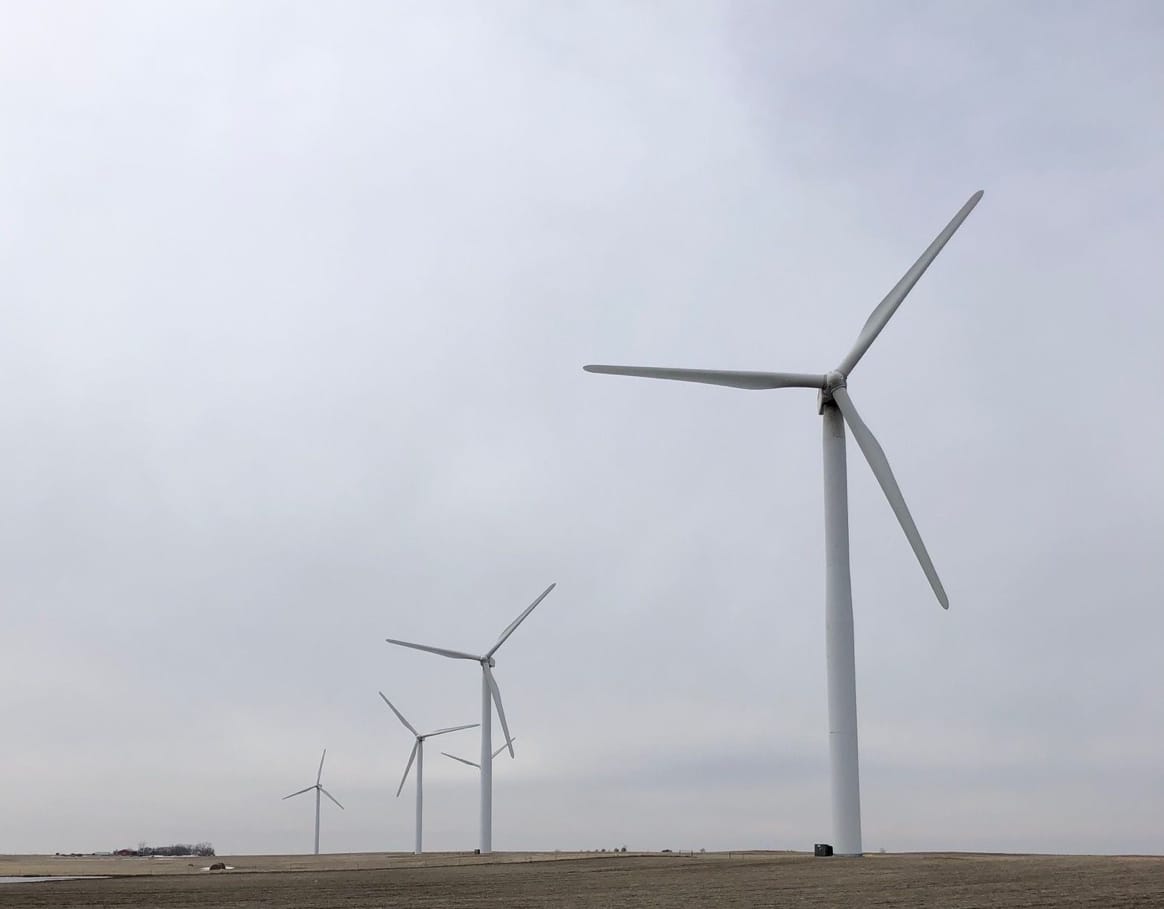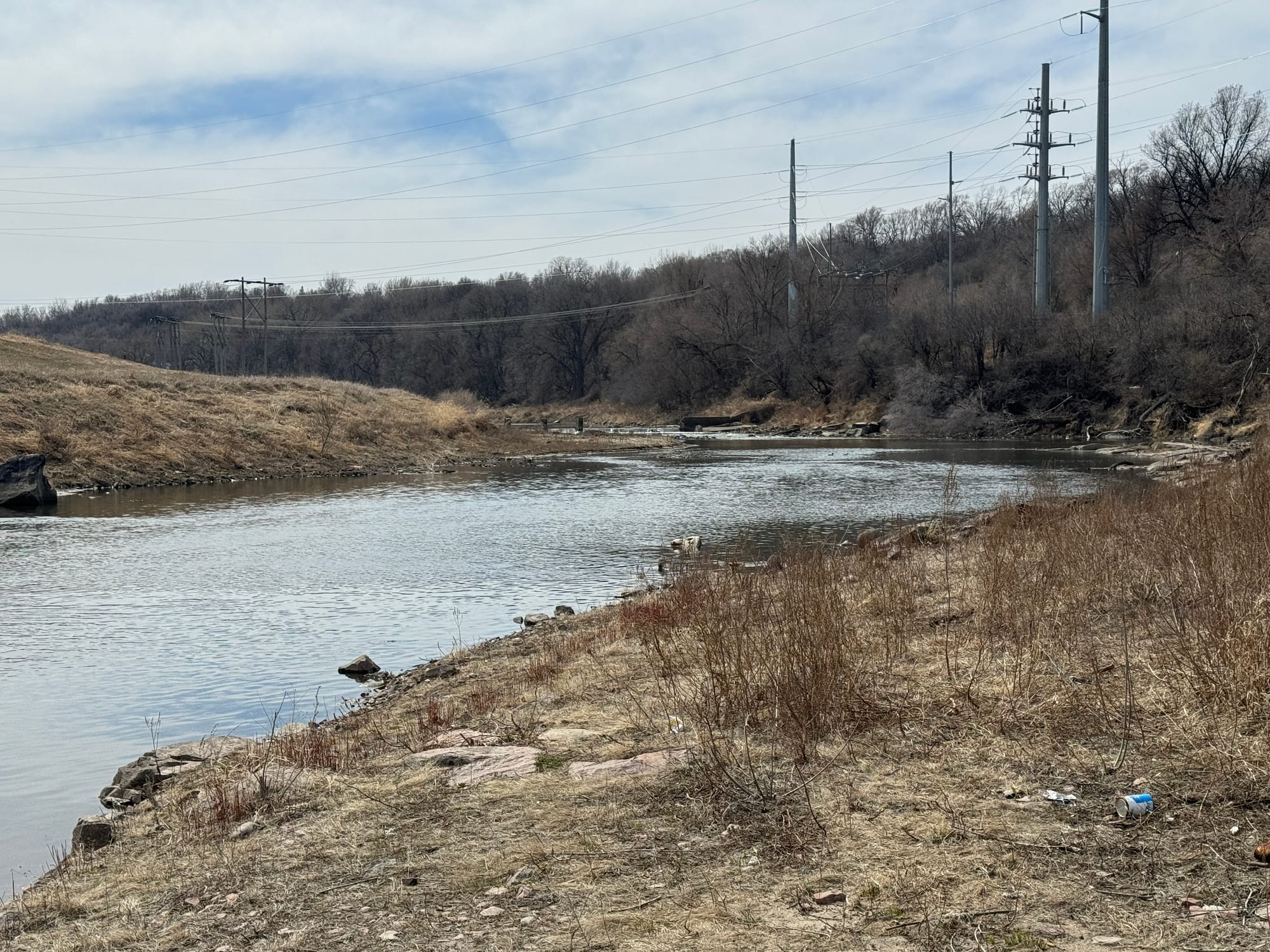
Stu Whitney, South Dakota News Watch
Changes to climate policy under President Donald Trump’s administration have sharpened Upper Midwest debates about the reliability of renewable energy and the separation of state and federal interests.
One point of agreement is that winning the White House means controlling the Environmental Protection Agency (EPA), a federal regulatory body that maintains and enforces environmental laws.
Lee Zeldin, Trump’s pick to run the EPA, has announced plans to dramatically reduce staff and reverse policies from the Joe Biden administration involving the oversight of coal-fired power plants, oil and gas development and water quality standards.
The deregulation is of keen interest to energy officials in Republican-led South Dakota and heavily Democratic Minnesota, where differences in climate policy have sparked border clashes over how pushing clean energy to reduce carbon emissions impacts the electrical grid.
The Minnesota Legislature passed a law in 2023 requiring all electric utilities in the state to produce only carbon-free energy by 2040 using sources like solar, wind, hydroelectric and nuclear power.
That law was an offshoot of Biden administration EPA rules requiring coal plants operating beyond 2039 to reduce greenhouse gas emissions by 90% by 2032, which critics saw as shutting down the industry.
Zeldin’s agency has rolled back those rules, inspired by Trump’s March 17 declaration on social media that he is “authorizing my Administration to immediately begin producing Energy with BEAUTIFUL, CLEAN COAL.”
Chris Nelson, a Republican member of the South Dakota Public Utilities Commission, said reversing coal plant regulations is good news for South Dakota and other states focused on the sustainability of the electricity grid and avoiding blackouts.
“The math didn’t add up with those greenhouse gas limitation rules,” Nelson told News Watch. “They simply could not replace all of those plants quickly enough (with other energy sources) to maintain reliability of the grid. So the Trump administration rolling back those particularly damaging rules was very helpful.”
Xcel Energy to retire coal plants by 2030
Not everyone shares that opinion.
The EPA’s actions face court challenges as clean-energy groups navigate federal and state environmental laws in a changing legal landscape.
The U.S. Supreme Court last year struck down the landmark 1984 Chevron “deference” doctrine, which required courts to defer to reasonable agency interpretations of ambiguous statutes.
Those interpretations are now up to the courts to decide. Democratic-leaning states are forging ahead with climate-based policies regardless of EPA rollbacks, using utility regulation as a tool to keep energy companies in line.
Minneapolis-based Xcel Energy, whose 3.7 million electrical customers include about 100,000 South Dakotans, is sticking with a plan to retire its coal-fired power plants by 2030 as part of an integrated resource plan approved by the Minnesota Public Utilities Commission in February in accordance with state law.
The plan includes replacing coal with “wind, solar and storage solutions” while also building a new natural gas plant in 2028 as a way to address capacity needs.
Natural gas, which replaced coal as the nation’s largest energy source in 2016, emits about half as much carbon dioxide as coal, according to the U.S. Energy Information Administration.
SD 9th in energy consumption per capita
The Xcel announcement came despite criticism from the South Dakota PUC, which questioned the company’s ability to pivot from fossil fuels at that pace without compromising reliability and affordability for customers.
South Dakota ranks ninth among U.S. states in energy consumption per capita, with 34% of households using electricity to heat their homes during frequently harsh winters. Nearly half (48%) use natural gas, with propane at 14%.
The PUC’s concerns were laid out in a 2024 letter to Xcel signed by Republican commissioners Nelson, Gary Hanson and Kristie Fiegen.
“Evidence is mounting that the premature closures … will elevate the risk of electricity outages particularly in tight load hours, including hours of extreme cold and extreme heat, as well as those hours when wind generation is low,” the letter stated. “These events are likely to pose a threat to life and property.”
South Dakota is part of the 15-state Midcontinent Independent System Operator (MISO), which helps ensure energy distribution regardless of whether a customer uses Xcel, MidAmerican Energy, Black Hills Energy, NorthWestern Energy, Otter Tail or another utility company.
Cooperation among these and other regional transmission organizations was critical during a major winter storm in January 2024, which brought brutally cold air and blizzard conditions to much of the Midwest.
“During that storm we got 7,000 megawatts of electricity from the East to help us keep the lights on,” Fiegen told News Watch in 2024.
‘We’re the tail trying the wag the dog’
Xcel’s decision to close coal plants despite South Dakota PUC warnings shows the challenge of trying to influence policy involving companies under the sway of different state laws and consumer interests.
“One of the difficulties we have is that South Dakota represents 5% to 6% of Xcel’s entire system,” said Nelson. “We are literally the tail trying to wag the dog on some of these decisions.”
Some utility companies are advocating a more measured pace on clean energy. Minnesota’s PUC clashed with Otter Tail Power over its decision to amend its long-range plan to push back closures of coal plants – including Big Stone near Milbank, in northeast South Dakota – until at least 2040.

The Minnesota PUC approved Otter Tail’s resource plan last summer after concessions that included the company no longer using its North Dakota-based Coyote Station plant for Minnesota customers beyond 2031.
Otter Tail’s most recent modeling projects a retirement date of 2046 for South Dakota-based Big Stone, which started operation in 1975 and burns coal from Wyoming’s Powder River Basin.
The plant received a $384 million air quality control system upgrade in 2015 following complaints from environmental groups that its lack of pollution controls violated the Clean Air Act.
“We don’t have any concerns about the Big Stone plant,” said Nelson. “They put pollution control equipment in that plant with the anticipation that they would be able to run it for a whole lot of years yet, and that is certainly our anticipation.”
Will wind energy policy hurt South Dakota?
Despite leaning on fossil fuels to keep the lights on in extreme conditions, South Dakota has harnessed the state’s wind power as an alternative energy source.
In 2023, South Dakota’s wind energy production accounted for more than half (55%) of the state’s in-state net power generation, a larger share than in all other states except Iowa, according to the U.S. Energy Information Administration.
The state’s other primary power sources include hydroelectric (21%), natural gas (14%) and coal (9%). Solar was less than 1% of the power generated (0.3%).
Increased wind energy production nationally runs counter to the direction of the EPA and Trump, who has criticized the efficiency of turbines and told supporters that “we’re not going to do the wind thing” at a rally shortly after taking office.
So far, the administration’s actions are aimed at offshore wind development, which rely on access to federal waters. It’s not clear how the EPA’s actions will impact South Dakota’s 24 active wind farms, which provide tax revenue and job creation for local communities.

In fiscal year 2022, 21 school districts received a total of $4.5 million in tax revenue from wind farms in South Dakota, led by Deubrook ($662,527), Deuel ($591,319), Waverly ($467,034) and Highmore-Harrold ($421,590).
“The actions that we’ve seen the administration take thus far as it relates to wind have been exclusively related to offshore wind projects,” said Nelson. “We’ve not seen any indication that there’s going to be any activity for turbines that might be located in South Dakota.”
One uncertainty is whether the Department of Energy’s recent cost-cutting efforts and cancellation of clean energy grants could impact federal tax credits and other incentives meant to spur installation of renewable energy projects such as wind farms.
“At this point, I think that’s probably an unanswerable question,” Nelson said.
‘It’s going to make life more difficult’
Another reversal in federal climate policy involves the extent to which the government regulates lakes, rivers, streams and wetlands under the Clean Water Act, signed into law in 1972.
The Trump administration, emboldened by a friendly 2023 Supreme Court ruling, is working under the philosophy that federal regulations have protected too many wetlands and improperly limited private property rights.
With South Dakota’s traditionally lax approach to state regulations, the lack of federal oversight has some environmental groups concerned that water quality in the Big Sioux River, for example, could go from bad to worse.

Testing has shown high levels of E. coli bacteria in the tributary that weaves through eastern South Dakota, mostly from upstream agricultural operations, livestock manure and stormwater runoff. The Big Sioux’s watershed encompasses about 7,280 square miles in South Dakota, Minnesota and Iowa.
Also heavily scrutinized is Sioux Falls-based Smithfield Foods, a pork processing plant that ranked seventh nationally among non-poultry animal slaughtering facilities in 2022 for the amount of nitrate compounds released into the Big Sioux.
Smithfield went operational with a new $45 million wastewater treatment facility in May 2023, reducing the amount of nitrate released. But that action was attributed partly to pressure from federal regulators.
“If there’s an environmental pollutant that isn’t managed by the feds, South Dakota could set its own standard, but that’s highly unlikely,” said Jay Gilbertson, manager for the East Dakota Water Development District, which promotes conservation and proper management of water resources.
“Basically, we do what we have to do in South Dakota from a regulatory standpoint. So if the people who decide what we have to do are saying we should do less, it’s going to make life more difficult.”
Some of the strategy to reduce pollutants involves incentives, such as payments to landowners to build buffer strips along the river. But those programs could be in jeopardy if federal grants and staffing are reduced by the U.S. Department of Agriculture and other agencies, putting more responsibility on private organizations to urge protections.
States such as neighboring Minnesota are taking notice, mindful of the axiom that pollution knows no borders.
“We’re at the mercy of the political will of neighbors to stop burning coal or emitting other harmful pollutants that travel into our state,” Leigh Currie of the Minnesota Center for Environmental Advocacy told Minnesota Public Radio. “We might not have, going forward, the help from the federal government that we’ve had in the past.”
